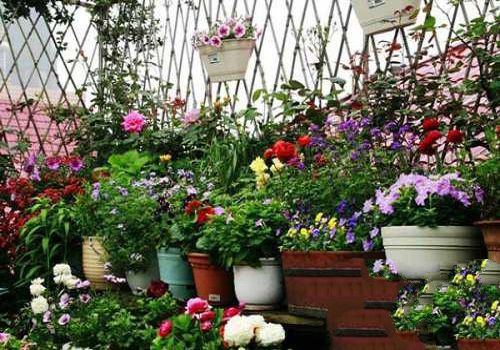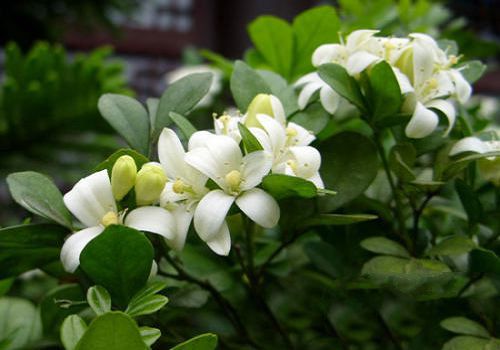Several aspects that should be paid attention to in the management of flowers overwintering

When winter comes, how to grow flowers in winter has become a thorny matter, especially in places where there is no heating. First of all, flower friends should be aware of the conditions they can provide for flowers and plants. Some flowers are too low in temperature and will freeze to death no matter how they are maintained. So the key to growing flowers in winter is to provide temperature protection. If there are no conditions to provide, you should be psychologically prepared, because there are no skills for tropical plants to withstand the cold. Here are some aspects of flowers and plants overwintering.
There are many ways to increase the temperature, flower friends can play their own, such as a small greenhouse, windbreak, etc., choose the most suitable for their own.
1. Temperature:
1. For cold-resistant flowers with low temperature and cold temperature (5-12 ℃, below 5 ℃), such as pomegranate, rose, wax plum, sweet-scented osmanthus, palm, pedicel begonia and crape myrtle, you can put them in the outdoor courtyard or balcony facing the sun.
2. Flowers that need to be kept at medium temperature (12-20 ℃), such as Magnolia, Camellia, Azalea, Michelia, Gentleman, inverted Golden Bell and four Seasons Begonia, must be moved indoors before the temperature drops to 10 ℃.
3, for flowers that can grow normally under high temperature (18-30 ℃), such as Milan, Fusang, jasmine, Cinnamomum mongolicum, daffodils, epiphyllum, lotus, cactus, cactus and aloe, etc., must be moved indoors before the temperature drops to 12 ℃, put the flowerpot in a plastic bag before the temperature drops to 5 ℃, and tie the plastic bag tightly, leaving a small number of pores on the bag to facilitate ventilation. Around noon when the weather is clear and windless, move outside to bask in the sun for a few hours and then move back to the room to keep warm.
2. Pruning:
Before overwintering, potted flowers should be pruned in time to reduce nutrient consumption and indoor space during overwintering.
3. Fertilization:
Apply fertilizer and water once before overwintering. When overwintering, flowers generally stop fertilizing.
Fourth, watering:
Generally, it is necessary to keep the basin soil dry and water less. The watering time in December should be 3 to 4 hours before and after noon, and the water temperature should be basically consistent with the air temperature and soil temperature, so as to avoid adverse reactions caused by low water temperature.
5. Ventilation:
Pay attention to regular ventilation, preferably when there is a sunny day, or at noon when the temperature is high. When ventilating, we must also pay attention not to let the cold air blow the plant directly, so as to avoid adverse reactions.
6. The beginning of spring:
At the beginning of next spring, generally during the period from the Spring Equinox to the Qingming Festival, overwintering flowers can be moved outdoors and applied with fertilizer and water, such as bio-organic fertilizer, yellow leaves must be treated, trace element water-soluble fertilizer, and so on, so that flowers can grow normally in spring.
7. Pest control:
For flowers and trees that are prone to diseases and insect pests in the leaves of begonia, roses and camellia, collecting and burning the dead branches and leaves under their plants can reduce the occurrence of diseases next year. At the same time, carbendazim was sprayed for sterilization. For Botrytis cinerea of * * disease, rust and primroses, triadimefon or tocopherol can be used to prevent and cure respectively. When there is poor ventilation, aphids often appear on potted plants, such as Magnolia, Milan and so on. Imidacloprid can be used for control. For scale insects, of course, it is necessary to use targeted scale control.
In winter, some shallow landscape bonsai and tree stump bonsai must be carefully managed: 1, to prevent the roots of plants from frostbite in the basin soil, 2, to prevent the disintegration of artificial cemented rocks caused by freezing, and 3, to prevent plants planted on rockery from freezing or drying to death. It can be placed in an ice-free place and watered regularly so that it can survive the winter safely.
Related
- What if the leaves of potted flowers turn yellow?
- Florescence Control of several Flowers
- Anti-freezing technology and post-freezing nursing technology of flowers
- What is the classification of flowers? What are the common methods of flower classification?
- Prevention and control of alkali and acid damage of flowers in courtyard
- Technology of Anti-freezing and restoring growth of Flower seedlings in greenhouse and greenhouse
- How does flower fertilization not hurt the root? Fertilization technology of flowers
- Key points of disinfection in flower greenhouse
- Several pesticides that are banned or used cautiously in flowers
- How to fertilize the flowers that watch the leaves?



